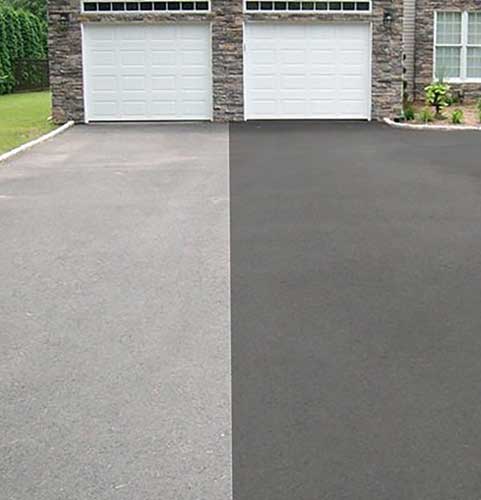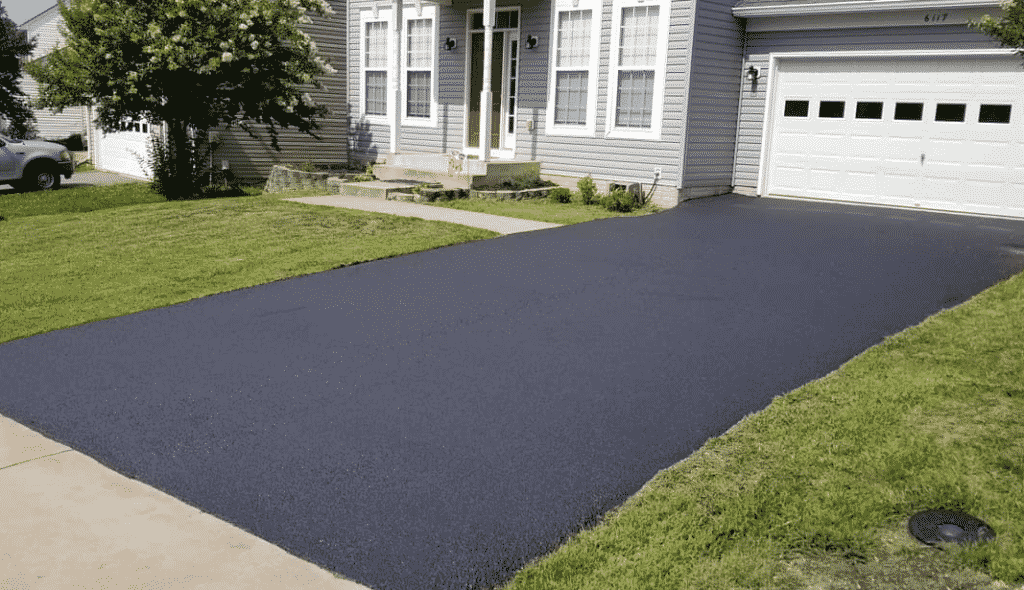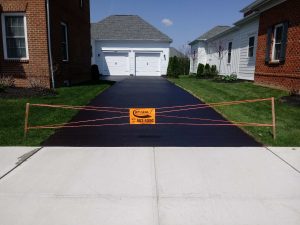Elevate Security and Allure: Angled Parking Area Solutions with Asphalt Sealing
Elevate Security and Allure: Angled Parking Area Solutions with Asphalt Sealing
Blog Article
Warm Mix Asphalt: A Lasting Remedy for Sidewalk
Warm Mix Asphalt (HMA) has actually emerged as a leading lasting option for sidewalk remedies, providing a myriad of innovative innovations and environmental benefits. As the demand for environment-friendly construction techniques expands, discovering the nuances of HMA's sustainability can give valuable understandings into the future of sidewalk remedies.
Ecological Benefits of Warm Mix Asphalt

Additionally, Warm Mix Asphalt aids to minimize metropolitan heat island results. Its dark shade soaks up sunshine, decreasing the amount of heat reflected back into the environment contrasted to lighter-colored pavements. This can reduce ambient temperatures in city locations, decreasing the need for air conditioning and ultimately decreasing power usage.
On top of that, Hot Mix Asphalt adds to boosted stormwater management. Its porous nature allows water to reenergize and infiltrate the sidewalk groundwater products, minimizing runoff and the threat of flooding. These ecological benefits make Hot Mix Asphalt a sustainable choice for leading freeways and roads.
Energy Efficiency in HMA Production
Is energy efficiency an important variable in the production of Hot Mix Asphalt (HMA)? Energy plays a substantial role in the production of HMA, influencing both expense and environmental sustainability. One key aspect of power performance in HMA manufacturing is the usage of warm mix asphalt (WMA) innovations.
Moreover, advancements in plant innovations have actually resulted in more energy-efficient HMA manufacturing processes. Modern plants are designed with attributes like recycled asphalt pavement (RAP) processing abilities, effective heater systems, and enhanced insulation, all contributing to energy financial savings. By maximizing power usage in HMA manufacturing, the sector can decrease its carbon footprint while maintaining high-quality pavement materials. Energy efficiency is, for that reason, a crucial consideration in making certain the sustainability of Hot Mix Asphalt production.
Recyclability of Warm Mix Asphalt
The recyclability of Warm Mix Asphalt (HMA) is an essential element of its sustainability and long-lasting environmental impact. HMA is among one of the most recycled materials in the USA, with over 100 million lots of redeemed asphalt pavement (RAP) being reused every year in new pavement building and construction. Reusing HMA offers a number of ecological advantages, such as lowering the requirement for virgin products, lowering power intake throughout production, and reducing the amount of waste sent to landfills.
The process of reusing HMA involves crushing the existing sidewalk, crushing it right into smaller pieces, and blending it blog here with brand-new aggregate and asphalt binder to develop a recycled mix. On the whole, the recyclability of HMA plays a considerable function in advertising lasting practices within the sidewalk sector.

Long-Term Efficiency of HMA
Asphalt pavements show longevity and durability over an extended period, showing the lasting performance of Hot Mix Asphalt (HMA) Additionally, advancements in HMA technology, such as the use of polymer-modified binders and warm mix asphalt, have even more enhanced the resilience and durability of HMA pavements. By prioritizing quality construction and maintenance techniques, HMA continues to confirm itself as a affordable and lasting service for lasting pavement infrastructure.

HMA: Durability and Sustainability
Demonstrating both resilience and sustainability, Hot Mix Asphalt (HMA) has actually come to be a keystone in the building and construction of lasting pavement facilities - angled parking. HMA's resilience stems from its capability to stand up to heavy loads, rough weather, and high website traffic quantities, making it a reputable option for streets, highways, and airport paths. The composition of HMA, which usually consists of aggregates, binder, and filler, plays an essential duty in enhancing its durability and resistance to tear and use
Moreover, HMA's sustainability hinges on its recyclability and energy-efficient production procedure. The capacity to reuse reclaimed asphalt pavement (RAP) in new HMA mixes reduces the need for virgin materials and decreases the ecological effect of pavement building and upkeep. Additionally, the energy effectiveness of generating HMA depends on its lower mixing temperatures contrasted to other sidewalk materials, leading to lowered power usage and greenhouse gas YOURURL.com exhausts.
Conclusion
In conclusion, warm mix asphalt (HMA) provides a sustainable option for pavement with its environmentally pleasant features. HMA's recyclability, power efficiency in manufacturing, and lasting sturdiness make it an eco-friendly selection for road building. By preserving natural resources, minimizing waste, and reducing greenhouse gas emissions, HMA plays a critical role in promoting sustainability in infrastructure development. Its capacity to mitigate urban heat island results further emphasizes its relevance in developing ecologically aware and resistant sidewalk systems.
HMA is here one of the most recycled materials in the United States, with over 100 million tons of redeemed asphalt pavement (RAP) being recycled yearly in brand-new sidewalk construction.The process of reusing HMA entails milling the existing pavement, squashing it into smaller sized pieces, and mixing it with new aggregate and asphalt binder to produce a recycled mix.Asphalt sidewalks demonstrate longevity and strength over an extensive period, mirroring the long-term efficiency of Warm Mix Asphalt (HMA) Additionally, advancements in HMA modern technology, such as the usage of polymer-modified binders and cozy mix asphalt, have even more enhanced the longevity and longevity of HMA pavements. The ability to recycle recovered asphalt pavement (RAP) in brand-new HMA combinations lowers the demand for virgin products and decreases the environmental effect of sidewalk building and maintenance.
Report this page